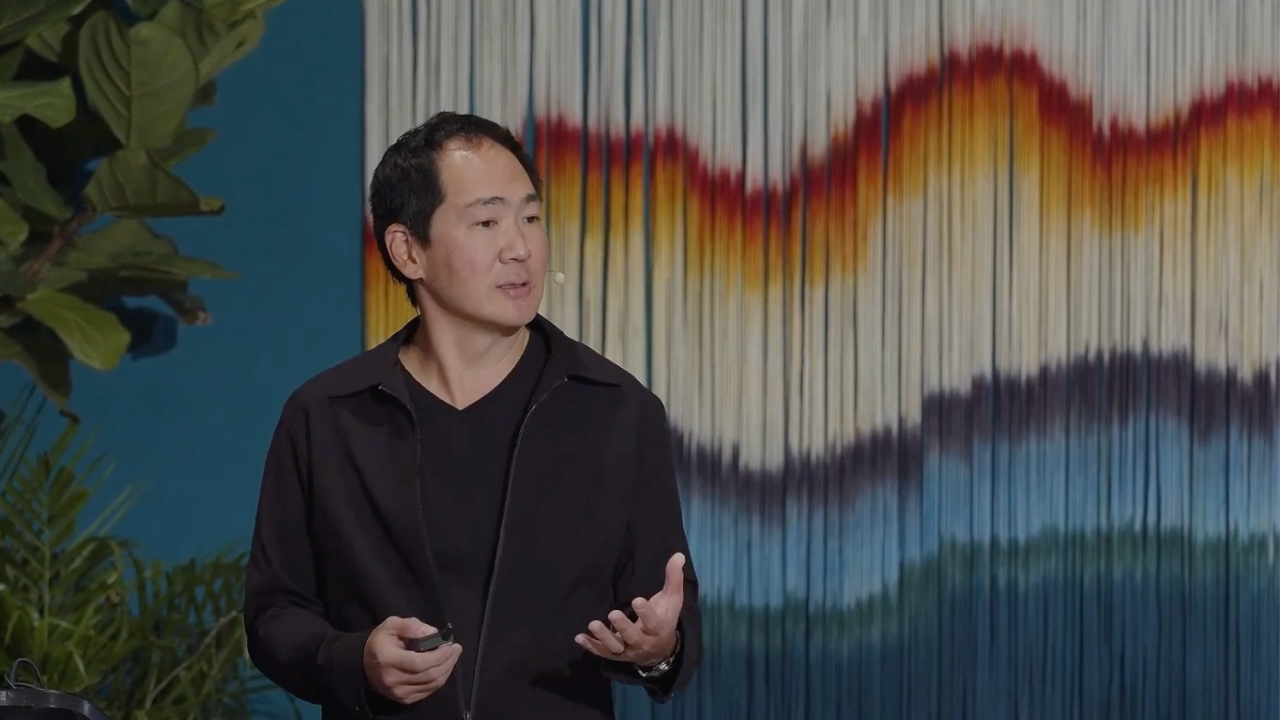Victor Cho, former CEO and current board member of Evite, joined us at our 2022 CEO Summit to share what it means to position “society” as the fourth key stakeholder, in addition to shareholders, customers, and employees, through the lens of Conscious Capitalism. Victor began by expanding on what he calls the 4th Stakeholder Framework before being joined by Dev Patnaik, CCI Board Member and CEO of Jump Associates, to dig deeper.
We’ve outlined the four steps of Victor’s framework that you can take to strengthen your business and improve society — truly elevating humanity through business.
What is the 4th Stakeholder Framework?
The 4th Stakeholder Framework is a playbook that encompasses shareholders, customers, and employees — and sitting in the fourth seat, Victor presents, is society. In this context, “society” can include everything from your community to your supply chain to the environment, capturing the stakeholders that conventional business practices often do not.
Victor’s experience at companies like Microsoft and Intuit — that are recognized for exceptional employee and customer experience — and leading Evite taught him how difficult it can be to successfully integrate the society stakeholder in a business approach. From these lessons, he identified four gaps that frequently arise when early-stage Conscious Capitalist businesses try to scale their impact, leading him to propose solutions that he structured into this actionable framework.
Think creatively — to do more good
In a Conscious Capitalist business, Victor argues that more than “100% of your revenue is decked against some kind of social good, ” so he challenges Conscious Leaders to expand beyond the idea of simply donating a percentage of revenue when determining how to create impact.
Instead, think creatively about how to “attach positive impact” to the Higher Purpose of your company, rather than retroactively giving back.
What might this look like? One example is when Evite introduced a fundraising opportunity into their event registration platform. They made it possible for hosts of birthday parties and other events to request donations for a nonprofit of the host’s choice, directly in the registration process, instead of asking guests to bring gifts. This approach not only set Evite apart from similar event platforms but also allowed Evite to “attach” $30 million of nonprofit donations to every $100 million of business revenue. As the company grows, this “impact revenue” will continue to grow, as well.
If you think about your businesses creatively, you will find a gazillion different ways to attach positive impact.”
Don’t ignore second-order impacts
An example of a first-order impact would be when you see something negative happen as a result of your action or behavior, and you change course. But a second-order impact, Victor explains, is a step beyond this — it is a societal harm to which business is only a partial contributor. Victor’s stance is that because this second-order impact is “a collective harm” — impacting society in multiple ways and caused by more than one entity — “it has to be solved with collective action.”
Victor puts forth the example of the correlation between depression and social media. He argues that leading social media companies could help combat the increased rates of depression, a second-order impact, by bringing other media companies together and committing to collective action to adjust business practices.
By paying attention to the downstream impacts your company may cause and layering on a creative solution, you can help alleviate societal harms that lie beyond the immediate scope of your impact priorities.
Use an Impact x Responsibility Matrix
We are all familiar with the reality that good intentions frequently fall short, and even conscious businesses struggle with this. When focusing on ways to address complex societal issues, it can take time to narrow down exactly what your company wants to address and what it can address.
To find this balance and help chart your path forward, Victor suggests businesses create an “Impact x Responsibility Matrix.” By mapping out your top priorities into a matrix that scales impact and responsibility from high to low, your company will know how to move forward in its Conscious Capitalism journey and, more precisely, how to create impact for all of your stakeholders.
Listen to your fourth stakeholder
Every business has a dialogue with its stakeholders. From shareholder meetings to customer surveys and employee feedback, businesses have many mechanisms in place to ensure they communicate with these groups, understand their needs, and find solutions. Victor points out the same should be true for a society stakeholder.
For a conscious business to understand what their society stakeholder’s needs are, they must listen first. Once your company opens up this dialogue, you can identify how your business might be able to provide creative, impactful solutions that are aligned with your business priorities.
Victor closes his summary of the 4th Stakeholder Framework with this call to action: if all businesses start implementing these tactics — that is how we use business to create global impact that elevates humanity.
Registration is open for the 2023 CEO Summit
Conscious Capitalism, Inc. is excited to announce that registration is now open for the 2023 Conscious Capitalism CEO Summit. The CEO Summit is our premier experience for CEOs, presidents, and founders committed to elevating humanity through business. Nominate yourself or a peer to attend →


